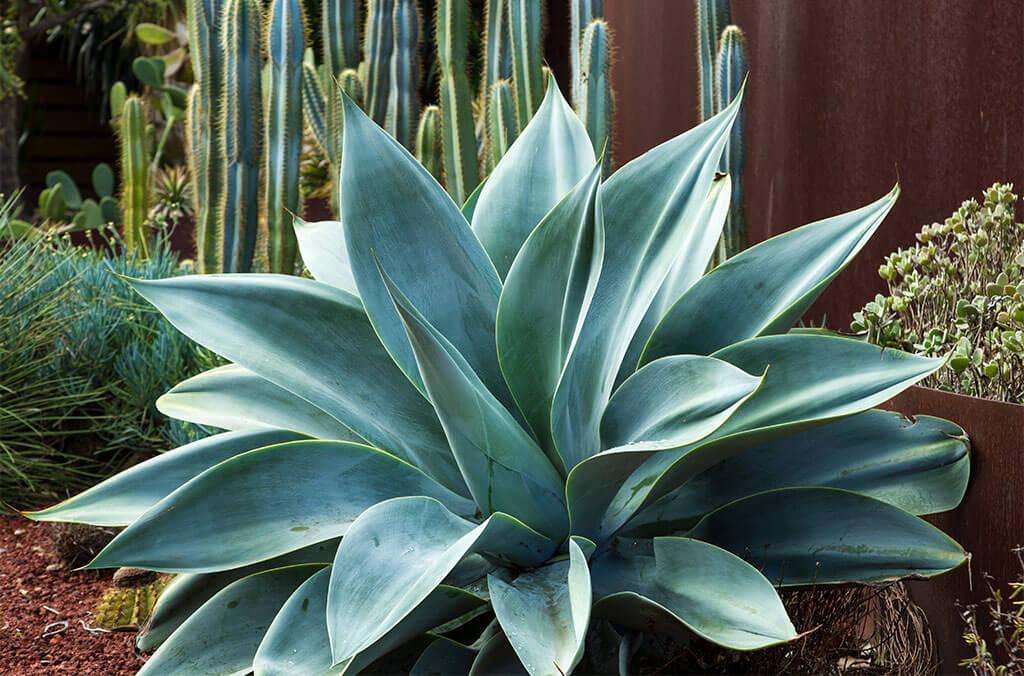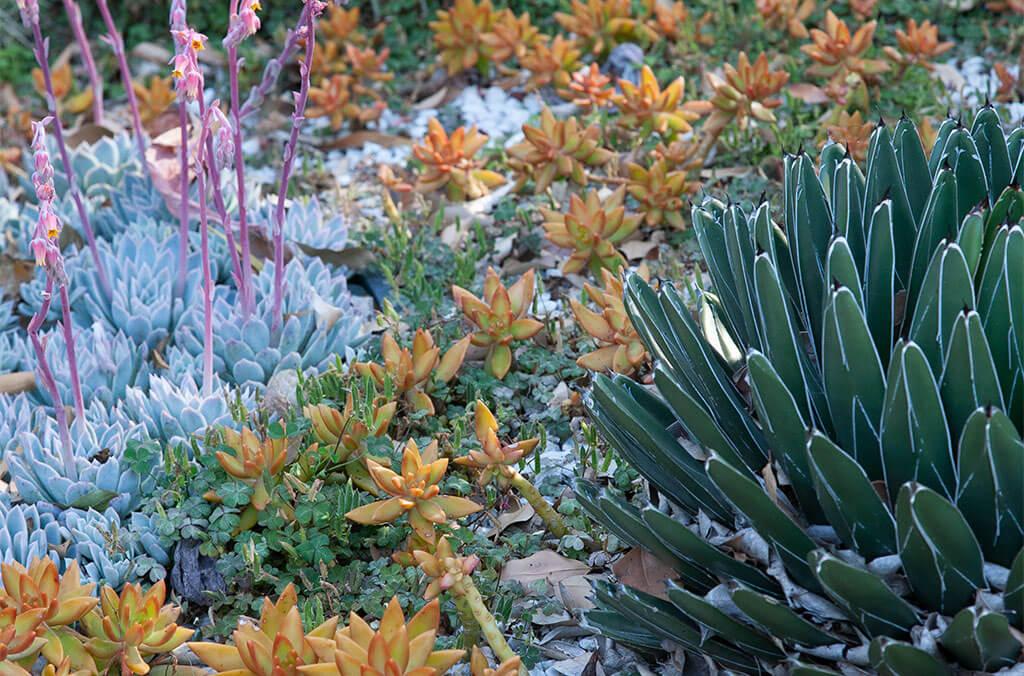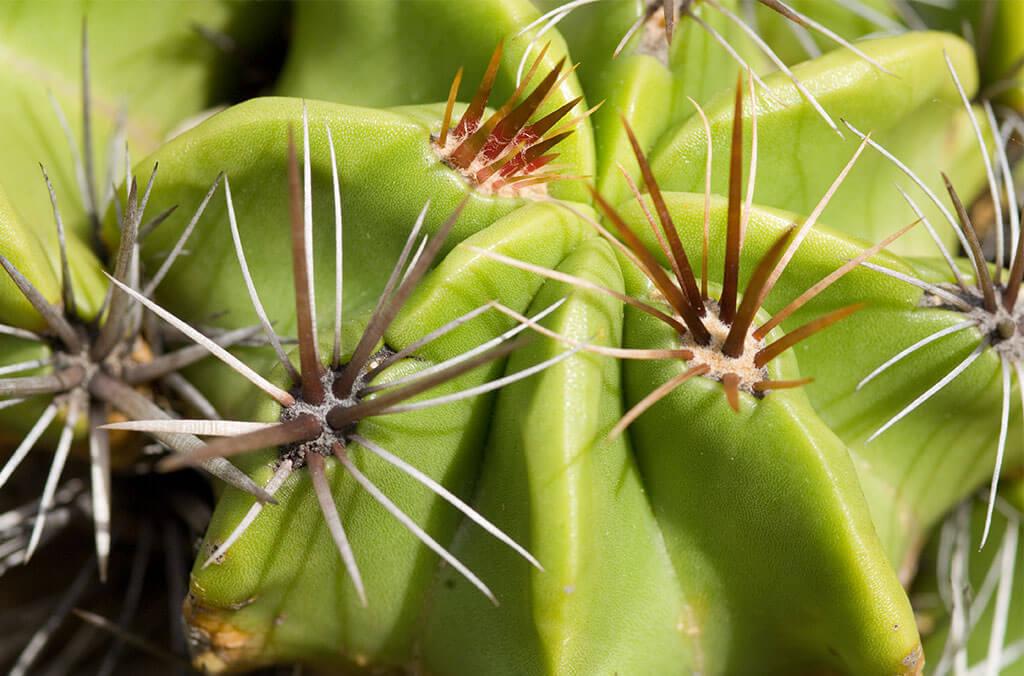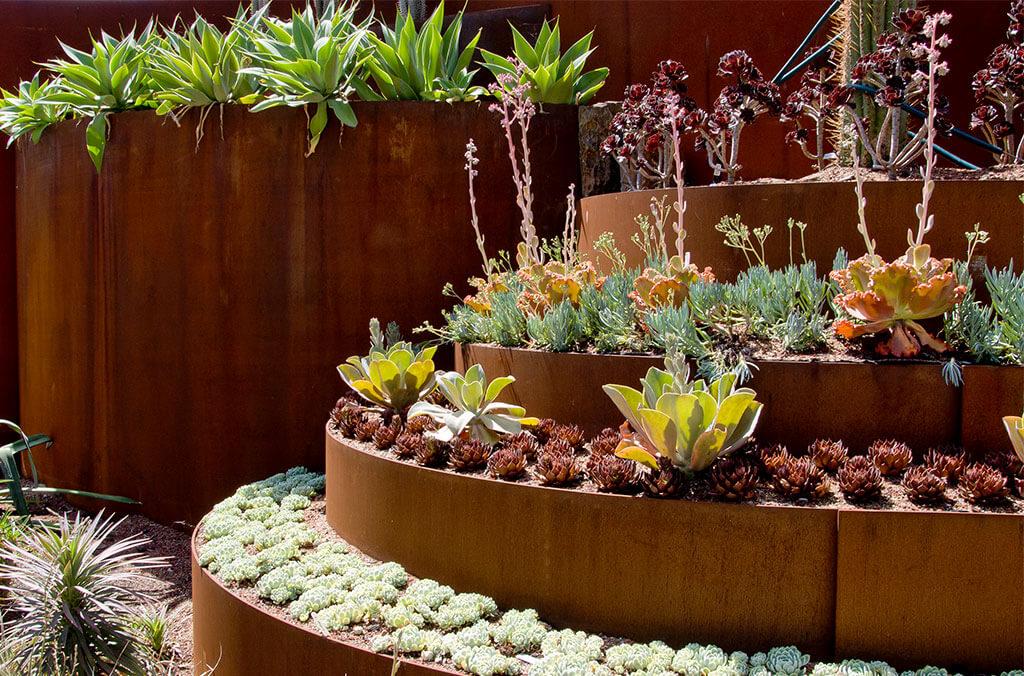The Succulent Garden
Built on the site of Australia’s first zoo, the Succulent Garden is now home to some of our strangest and most beautiful plants.
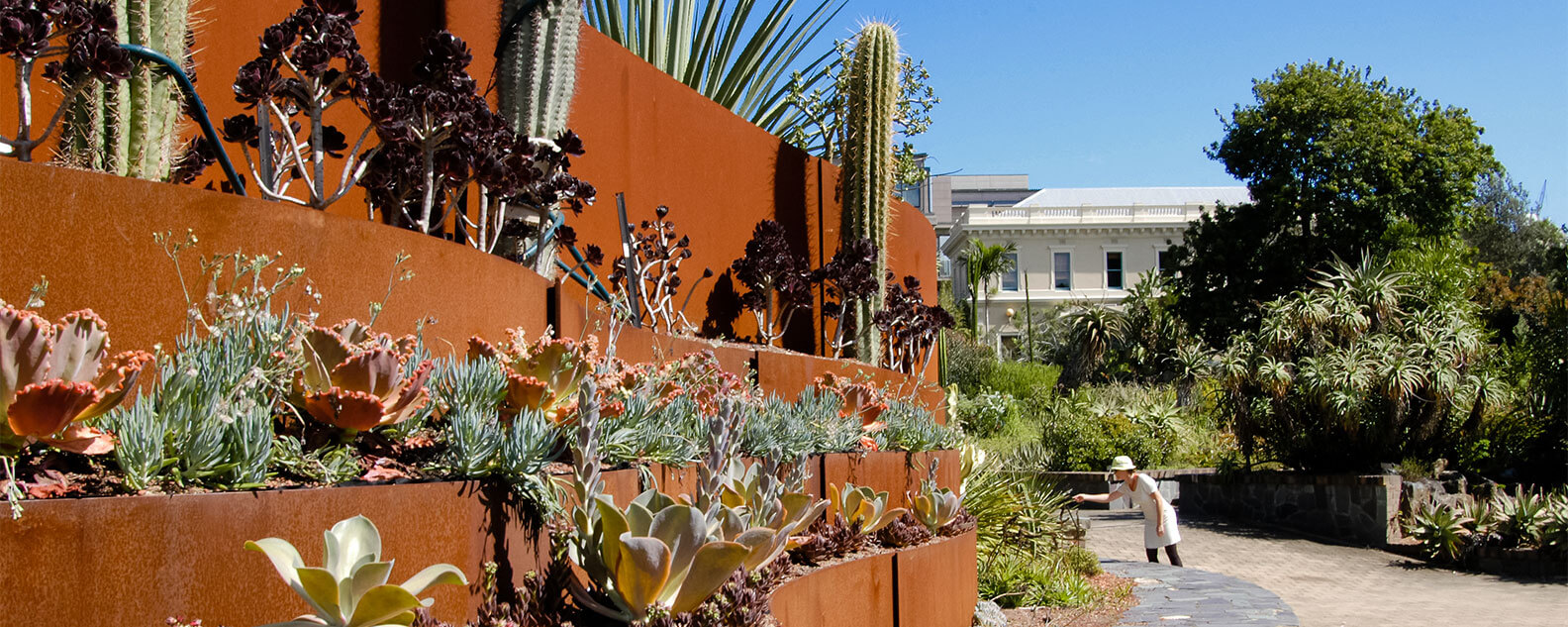
Visit the Succulent Garden and be amazed by plants that have adapted to survive some of the driest places on earth.
Aviaries were first built in this part of the middle garden in 1860. The fledgling menagerie quickly expanded when the Zoological and Acclimatisation Society housed their first animals – an anteater and Chinese deer – nearby.
A monkey house was added in 1880 and when most of the animals were taken to the new zoo at Moore Park in 1883, three tortoises remained and were allowed to wander in the Garden. When the last large female tortoise died in 1967, she was preserved and is now housed in our education classroom, delighting and surprising the children who visit. The aviaries were removed in 1940.
A small succulent and cacti rockery was built on the site in 1936, using labour employed by the Unemployment Relief Fund. This was replaced by our much larger succulent garden, which was completed in 1983.
You’ll find these remarkable, arid region plants arranged in geographical zones. The old world beds contain mainly African specimens, including colourful Aloes, spiny sap-bearing Euphorbias and the mysterious ground flowering Stapelia. The new world beds contain succulent specimens from the Americas, including Joshua trees (Yucca brevifolia) Agaves and giant Furcraeas, which take so many years to flower that they were once called Century plants. It is in the Americas that you will also find true cacti like the Golden Barrel cactus (Echinocactus grussonii).
Take inspiration from landscape designer Jamie Durie's sculptural garden and create your own at home.
The succulent garden is also home to a large sculptural garden created by television personality and landscape designer, Jamie Durie in 2007. The combination of colours in the planting and the rusted metal offers plenty of inspiration for cacti and succulent lovers. Take inspiration from landscape designer Jamie Durie's sculptural garden and create your own at home.
Bathed in morning sun, the succulent garden is an ideal place to warm up in winter and feast your eyes on the bright yellows, oranges and reds of our large African Aloe collection. The beds featuring plants from the Americas include similar looking, rosette-forming plants called Agaves. They owe their similarity to convergent evolution. Although they have not shared an ancestor for more than 90 million years, the plants have developed comparable morphological characteristics in response to a similarly harsh environment.
Visit the Succulent Garden and be amazed by the peculiar ways that plants have adapted to survive and colonise some of the driest places on earth.

Discover the beautiful shapes and colours of the Succulent Garden.
Bathed in morning sun, the succulent garden is an ideal place to warm up in winter and feast your eyes on the bright colours and unique forms.
